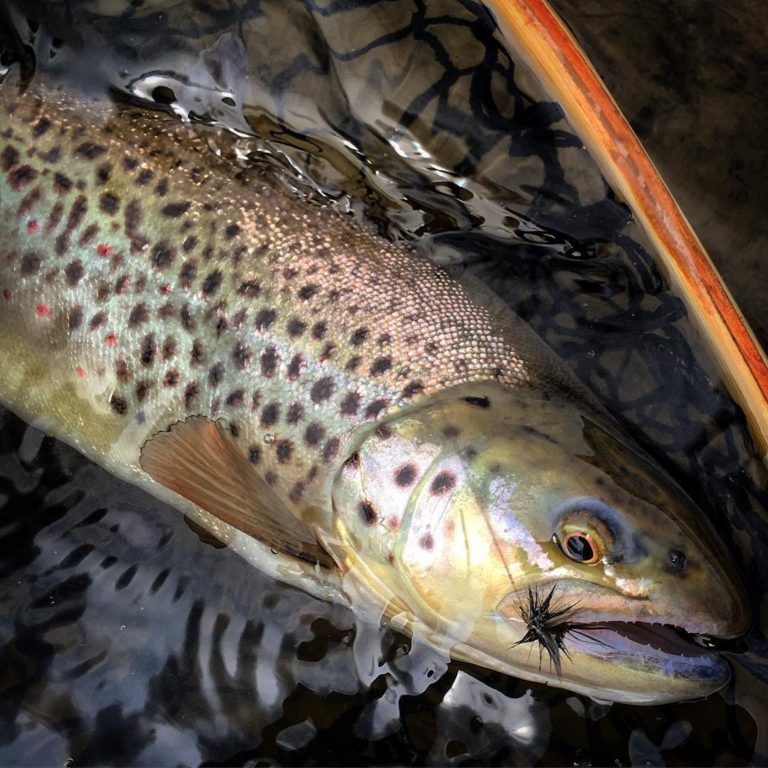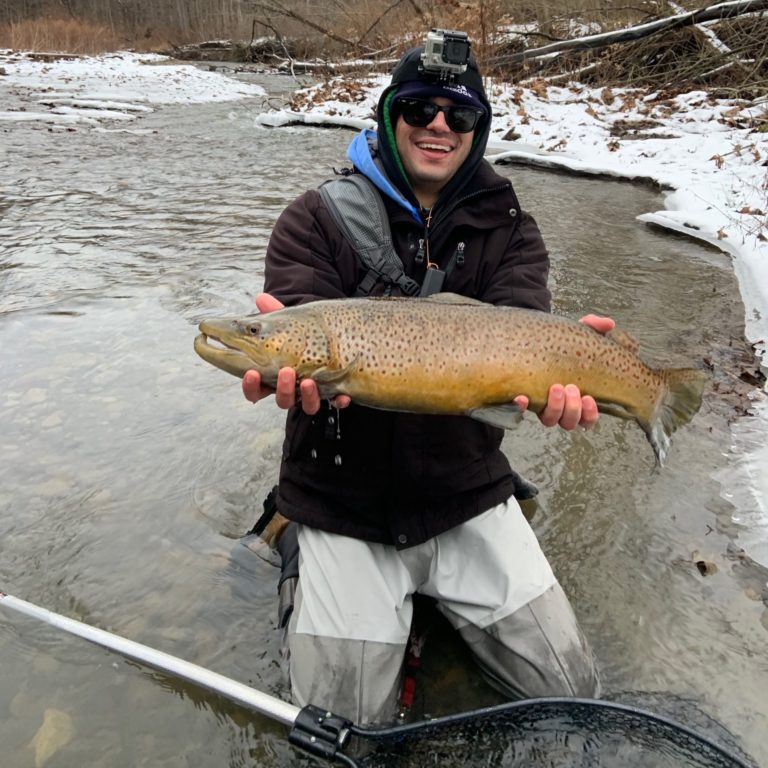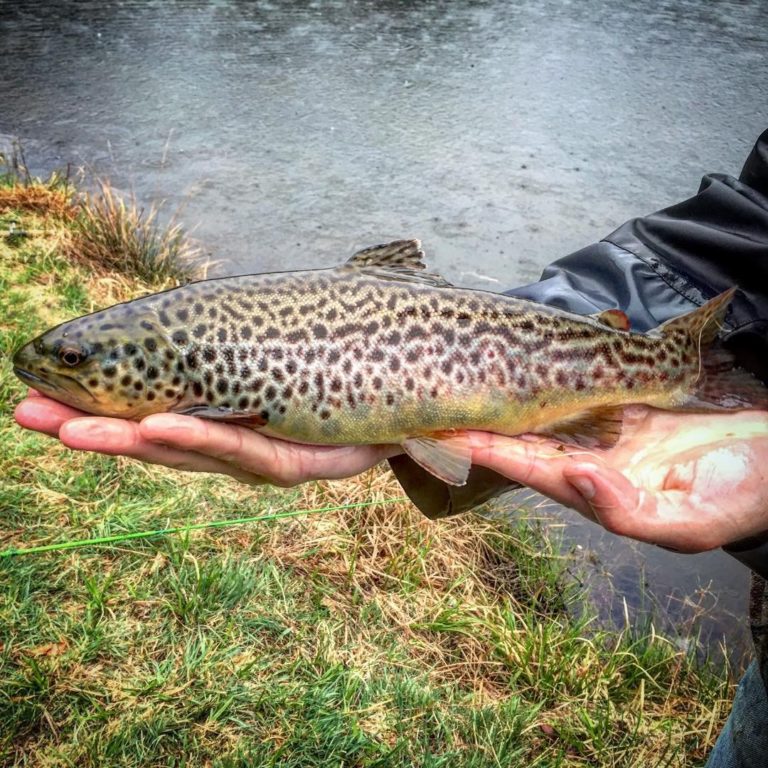The Brown Trout

The brown trout (salmo trutta) is a cold-water sport fish found throughout western New York. Brown trout typically range between 10 and 18 inches in length and can be identified by their golden-brown to sometimes orangeish body and black spots that cover the back and sides of the fish. Brown trout are generally larger than rainbow trout in inland streams.
Like rainbow trout, there are two main varieties of brown trout; those that reside permanently in creeks and streams across western New York and those inhabit lakes Erie and Ontario. The brown trout that inhabit the Great Lakes are anadromous, meaning swim up creeks and rivers from the lakes to spawn. Lake run brown trout are much larger than their inland counterparts (see below). This article focuses on the “inland” brown trout that reside permanently in streams and creeks across western New York and do not venture into Lake Erie or Ontario.

Habitat
Brown trout prefer the cold, clean, well-oxygenated water of streams and creeks, especially those that are spring fed. Lakes and ponds that are fed from cold springs are also able to support brown trout. Because brown trout are a cold-water fish species, they generally cannot survive year-round in creeks or lakes that become hotter than about 65 degrees in the summer.
In streams and creeks, brown trout are typically found in deep pools, especially those with tree cover. During low-light periods, brown trout will sometimes venture into shallower parts of the stream or runs to feed.
The size of a stream or creek governs the size of the resident brown trout. Small streams will generally support smaller trout because of a smaller forage base. In many of the streams here in western New York, brown trout may only average about 10 or 12 inches. Larger streams will generally contain larger fish, but even small streams can occasionally produce large brown trout of 18 inches or longer.
Food
Brown trout generally feed on insects, with larger trout feeding on smaller fish as well if they are available. In creeks and streams, brown trout commonly feed on nymphs, which are the larvae of aquatic insects. Brown trout will also feed on insects that fall into the water. On summer evenings or in the early morning, one can often witness brown trout sipping insects off the surface of the water.
Where to Catch Brown Trout
Wild brown trout, those born from natural reproduction and not stocked from a fish hatchery, are found primarily in the cold spring-fed streams of southern Erie, Wyoming, Chautauqua, Cattaraugus, and Allegany Counties. There is a nice list of wild trout streams on the New York State DEC website: http://www.dec.ny.gov/outdoor/29286.html
Some waters in western New York receive an annual stocking of trout from a fish hatchery to augment naturally reproducing populations, while other waters cannot support naturally reproducing populations and rely solely on stocking to supply fish for anglers. Stocked brown trout can be found in almost every county in western New York in the springtime when bodies of water without natural populations of brown trout are stocked with fish from a hatchery. There is a nice list of stocked trout streams on the New York State DEC website: http://www.dec.ny.gov/outdoor/31596.html There is also a list of all bodies of water that are stocked with trout annually on the New York State DEC website: http://www.dec.ny.gov/outdoor/30465.html
Wiscoy Creek in Wyoming County is one of the premier brown trout waters in western New York, with a good population of large, wild brown trout. However, these fish can be particularly savy and spook easy, especially in summer months when flow is low. Wiscoy Creek also receives a decent amount of fishing pressure.

How to Catch Brown Trout
Fly-fishing is one popular method for targeting brown trout in creeks and streams. Productive baits for brown trout on the fly include wooly buggers and black or brown nymphs, size 14-20, fished under an indicator. Split-shot weight should be added depending on how fast the water is moving and whether or not the fly is weighted. In the early morning or evening hours, dry flies such as caddis patterns, tricos, or mayflies can be used to catch fish sipping bugs off the surface.
For the spin fisherman, small Mepps® spinners are popular lures. Fishing worms on a small hook with some split shot is also good strategy. When fishing lakes or ponds, spin fishing is probably the best way to go. Brown trout can be caught on worms or Berkley Powerbait® fished off the bottom or under a bobber.
Spring and fall are the best times to target brown trout, when the weather is cool and creeks and streams have decent flows. Fishing in the dog days of summer, when creeks are warm and low, is extremely challenging and can put extra stain on fish, which is detrimental to their health.
